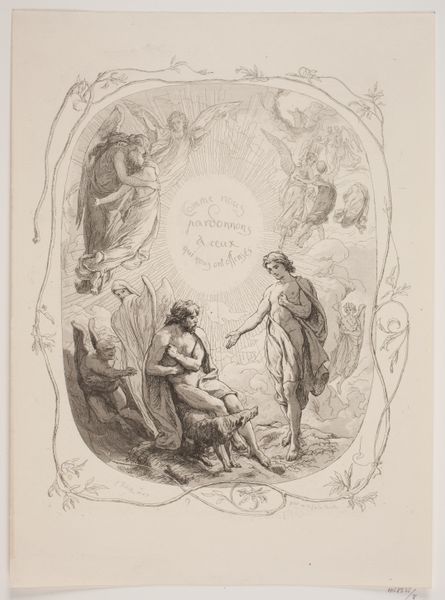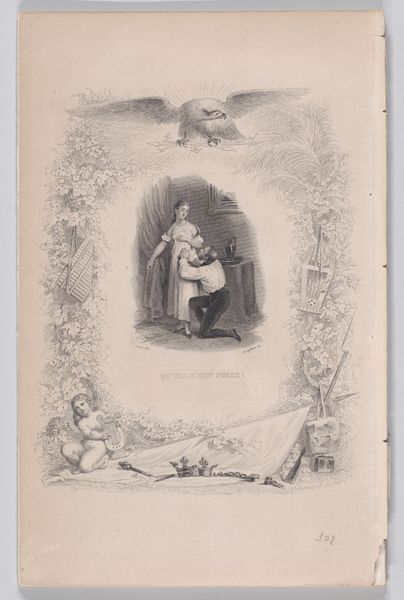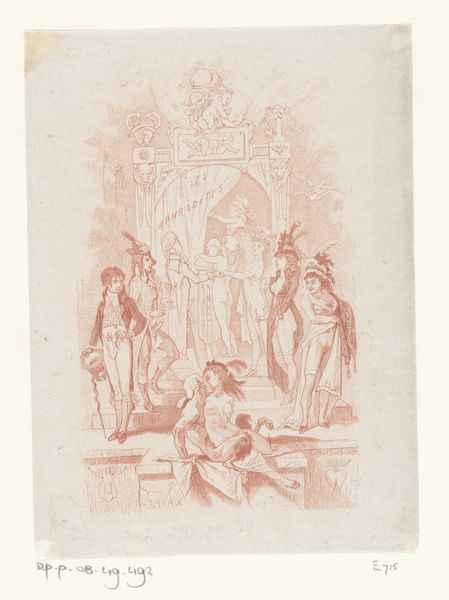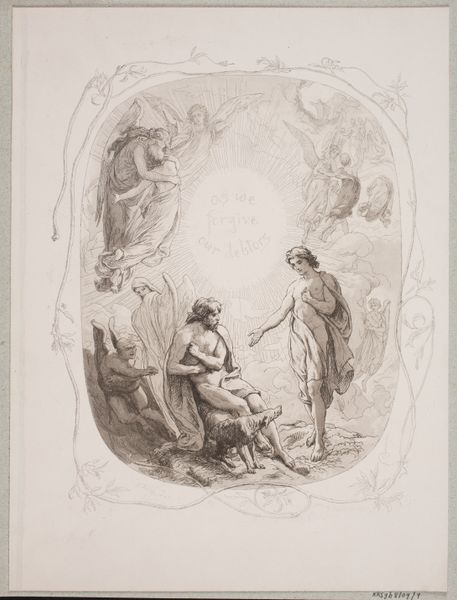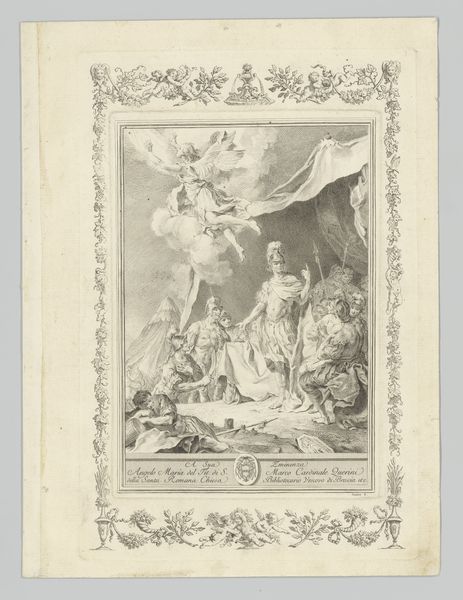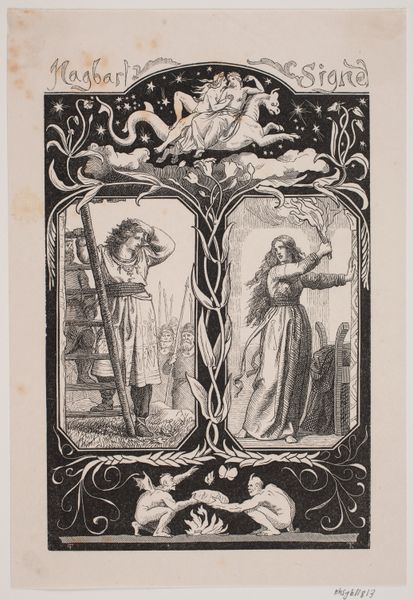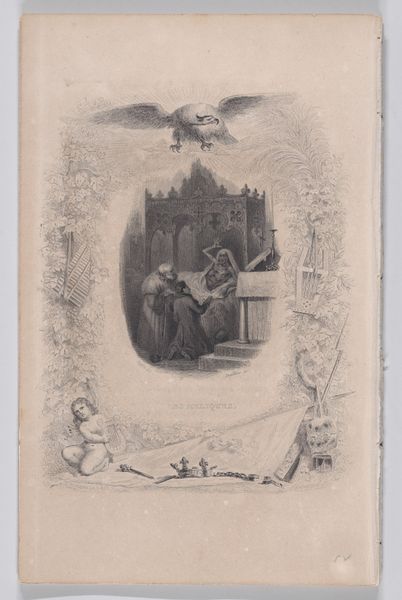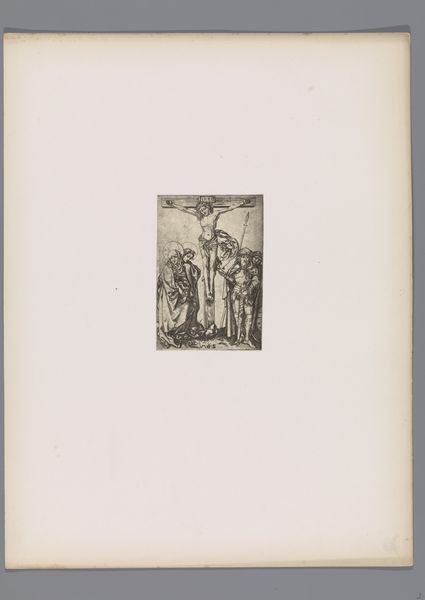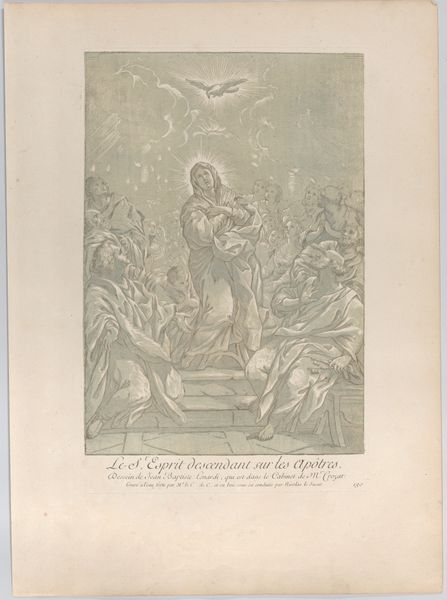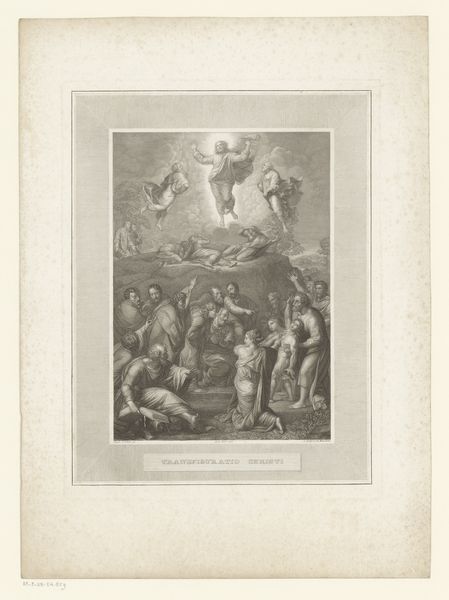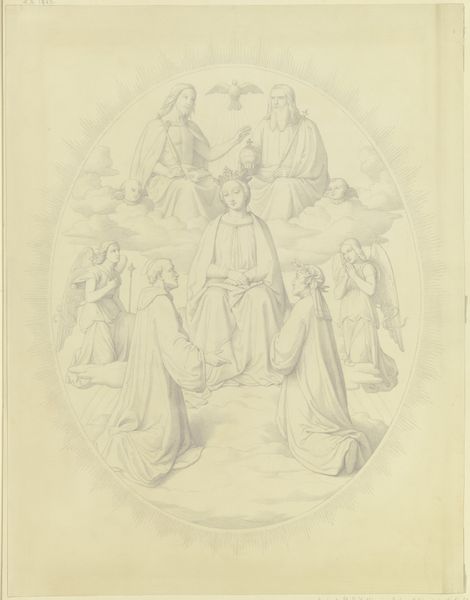
drawing, paper, pencil
#
portrait
#
drawing
#
narrative-art
#
pencil sketch
#
figuration
#
paper
#
column
#
pencil
#
academic-art
#
watercolor
Dimensions: height 364 mm, width 275 mm
Copyright: Rijks Museum: Open Domain
Here we see Célestin Nanteuil's print, a work of stark contrasts and classical echoes, rendered in monochrome. The composition is immediately striking, dividing the scene into three distinct vertical panels framed by an elaborate, vine-laden structure. This division brings to mind the triptych format often seen in religious art, yet here the sacred is subverted with scenes of familial, human drama. The figures inhabit shallow spaces that are almost stage-like. The linear quality of Nanteuil’s technique— the fine, deliberate lines that define form and texture—create a sense of depth but also flatten the picture plane, drawing attention to the artifice of the image. The artist uses a semiotic system to explore themes of faith and humanism. The characters' symbolic roles—the supplicant child, the protective mother, the guardian father—question fixed meanings and invite viewers to actively interpret the narrative. The print destabilizes traditional artistic values. The linear framework challenges our understanding of art as a mirror and invites ongoing interpretation.
Comments
No comments
Be the first to comment and join the conversation on the ultimate creative platform.

